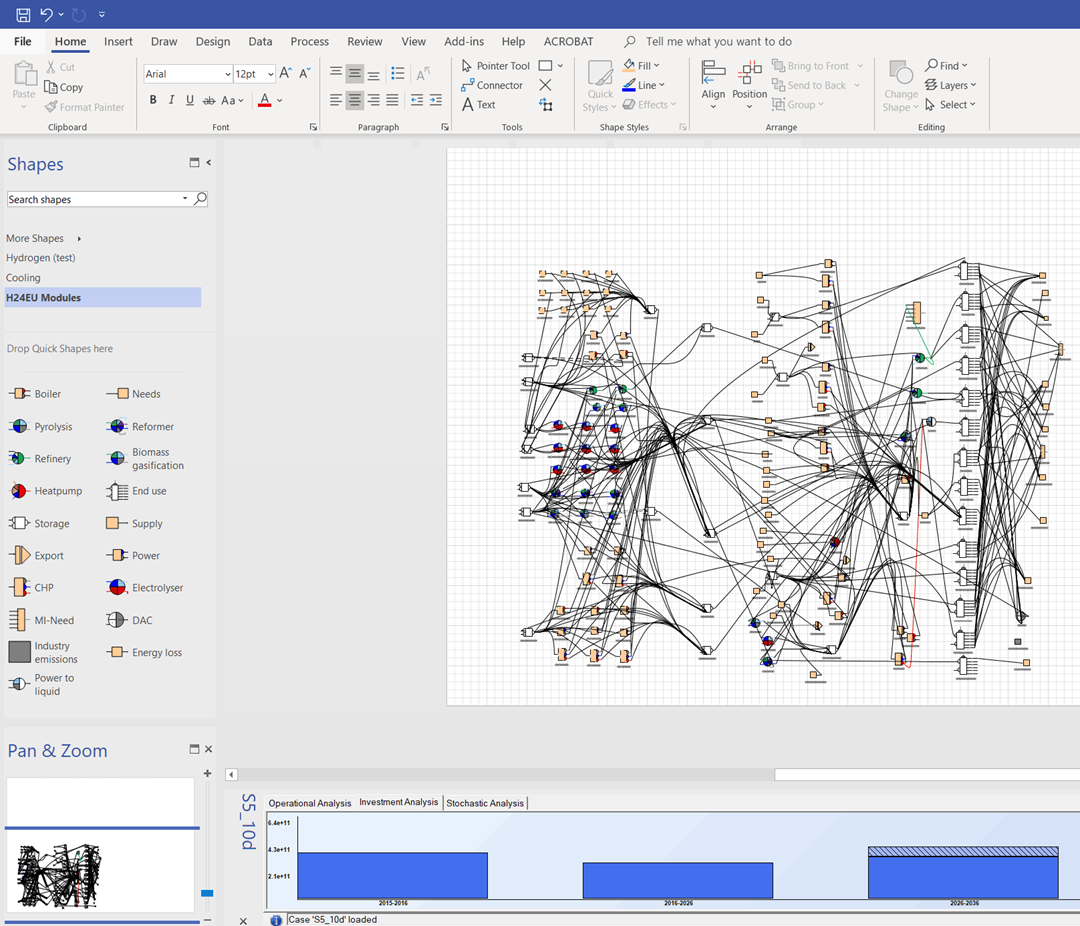
The main task of the model is to optimize investments over a planning horizon of several decades to bring available energy to the end user in such quantities and in such form that the end user's demand is covered in the most economic way possible, while conforming with (for example) CO2 emissions reduction targets. The model performs a system optimization, minimizing the total present value of all costs. The energy system costs are minimized by considering both investment (CAPEX) and operational costs (OPEX). The latter is assessed by optimization of diurnal operations for different seasons of the year for each alternative system design. This operational optimization is run prior to investment optimization and is based upon linear programming (LP). Optimization of investments is performed via dynamic programming (DP).
Integrate Europe can be used to analyse the impacts of technology learning on the cost-effective transition to an emission-free European energy system. Examples of central technologies are hydrogen production technologies such as electrolyzers, biomass- or natural gas-based reforming with integrated CO2 capture, and methane pyrolysis. To unlock this analytical capability and avoid computational hurdles, the energy system is represented at a European level and by aggregation of technologies into main categories. In addition, the main investment options to be analysed are bundled into pre-defined ‘investment packages’ which compete with each other within the dynamic programming module. The characteristics and investment breakdown within each package are calibrated mainly on the basis of cost-data for included technologies and the results of similar studies of energy system in transition towards similar end-state. The included quantities in the packages are also tuned by running the model several times.
Key features:
- Aggregated model of the European energy system
- Optimize and evaluate investment pathway for Europe towards net zero emissions by 2050
- Answer what effects early investment decisions and corresponding policies have on the maturing of technologies, cost and implementation speed


